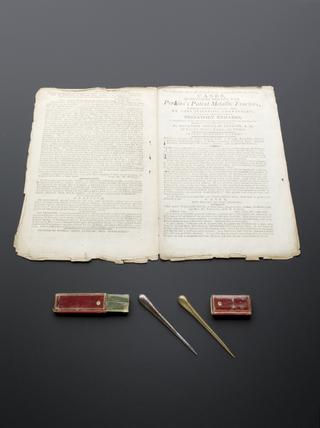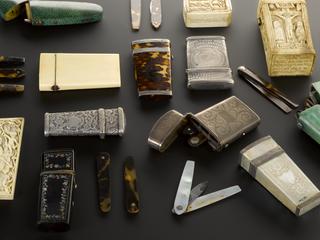
Box of laminaria tents, United Kingdom, 1871-1900
- Made:
- 1871-1900 in United Kingdom

Box of laminaria tents, for dilating os and cervix uteri, cardboard, British, late 19th century
Laminaria stalks are a type of seaweed. They are known as ‘Sea-Tangle tents’. Each ‘tent’ is a cylinder about 5-10cm long made from the dried stalk of the marine plant Laminaria digitata. They are inserted into the cervical canal when dry. They slowly expand as they absorb water. The tents dilated the cervix in genitor-urinary surgery. They took up to ten hours to reach full size. It was far less traumatic than other more rapid dilation methods.
The tents are contained in a cardboard box. This lists their advantages and notes they were introduced by eminent Scottish physician Sir James Simpson (1811-70). They are notoriously difficult to sterilise. However, these tents were used well into the 1900s.
Details
- Category:
- Therapeutics
- Collection:
- Sir Henry Wellcome's Museum Collection
- Object Number:
- A612553
- Materials:
- box, cardboard and tents, laminaria
- Measurements:
-
overall: 25 mm x 70 mm x 45 mm, .03kg
- type:
- laminaria tent



